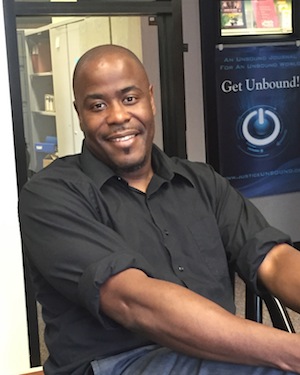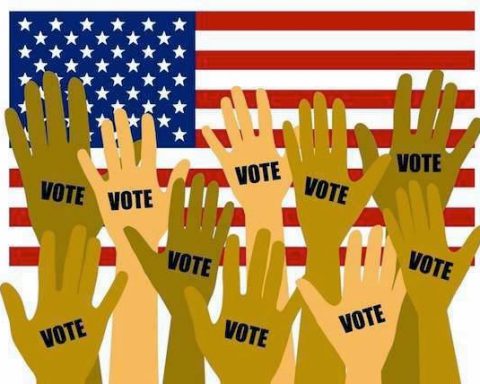[wpcol_1half id=”” class=”” style=””]
Ideas and Leadership
Every successful collaborative project of substantial scope needs to have a visionary, an organizer, a financial expert, and mobilizers. The early visionary was Tobi Hanna-Davies, the city council member, who understood the great need for affordable rental housing and believed that the religious community could be a catalyst for generating positive human and financial support. The organizer was Carole McCabe, executive director of Avalon Housing, who together with her board of directors and staff organized the vision into a realizable plan. The financial expert was Michael Appel, associate director of Avalon, who assembled the needed financial package of over $5 million. The mobilizers were many in number, but RAAH played a key role in motivating, energizing, equipping, and activating people to fulfill important supporting roles.
Carole McCabe brought her considerable experience of working with families of low income, city housing officials, nonprofit organizations, and city planners together with her ability to build alliances and create human community to bring forth a positive plan that was workable. Michael Appel, the financial wizard, brought his experience as a skilled social worker, his passion for social justice, and his understanding of banks and government funding agencies to bear on all the funders to help them see the validity of this development and provide the capital funding. RAAH had many active leaders who embodied a religious vision for social justice and a practical passion for truly affordable housing. Through the activity of a number of its deeply committed members, RAAH was able to mobilize public support; get positive coverage in the newspaper; turn out significant numbers of speakers at the many public hearings. and activate congregations, individuals, and denominational agencies to raise $200,000 for the land purchase.
The vision for a successful nonprofit, low-income, rental housing community did not spring full-blown from the beginning. It developed and matured during a process over a period of several years. The key ideas that Avalon had at the beginning included low-rent affordability, on-site supportive services, creating community, and financial stability. These ideas were fleshed out as the project moved along, as new collaborative partners were found, as various hurdles were overcome, and as city, state, and federal requirements were met. A brief sketch of some of the substance of each of these areas in the decision to construct new rental housing for the lowest income people and for those coming out of homelessness follows.
Affordability:
- The real need of over one thousand families and individuals on affordable housing waiting lists within the county.
- The relentless, never-ending stream of homeless and low-income people who kept coming to seek a positive response to their desperate need for housing.
- The empowerment of people of great need by Avalon and RAAH to speak up and positively articulate their legitimate needs to city officials and the religious community.
- The wisdom to understand that home ownership is not the answer for a large number of families who need good quality, affordable rental housing.
[/wpcol_1half] [wpcol_1half_end id=”” class=”” style=””]
Supportive Services:
- Recognition that resident-oriented assistance is necessary for formerly homeless people and very low-income families to make the transition to independent living.
- Understanding that providing on-site, professional supportive services is a necessary part of good quality low-income housing and must be put into the funding plan for a successful development.
- Contracting in advance with Catholic Social Services to provide on-site professional supportive services for families in the Carrot Way Community from the beginning of occupancy.
Community Development:
- Recognition of the need for intentional community building among the residents and providing leadership for bringing residents together into a caring network.
- Designing and constructing a community center facility as an integral part of the housing complex to provide good quality space for community life, creative arts, and health and education programs.
- Enabling the organization of a resident association for residents to have a voice in management policy formation and program planning.
- Organizing outreach meetings with homeowner neighbors and making the Carrot Way Community Center available to neighborhood groups.
Financial Stability:
- Anticipating the human as well as the physical costs of successfully operating a rental housing community for low-income families and planning in advance for these expenses.
- Doing continuing public interpretation of the financial value of good-quality, well-managed supportive services as a preventive investment that saves money for taxpayers in the long run.
- Demonstrating the practical feasibility of this model to city, state and federal agencies to support future financial investment.
A marvelous symbol that brings all of these important features together in one art object is the Peoples Mosaic. It is a large, colorful, vivid panorama of ceramic tile on the front of the Carrot Way Community Center building. A local artist, Kathleen Letts, worked with the residents to design and create the mosaic. It is a large panel done in the style of Diego Rivera, the great Mexican artist. The mosaic contains a variety of scenes of people in community life. It symbolizes human mutuality, solidarity, aspiration, education, and hope. The interpretive flyer for the mosaic carries this message: “Homes are for people, for living, and for human sharing; homes are not pieces of property for mere profit-making! Carrot Way—a Place of Justice—A Community of Hope!”
[/wpcol_1half_end]
Dr. Nile Harper is director of Urban Church Research, Minneapolis and former chairman of the Presbyterian General Assembly’s Advisory Committee on Social Witness Policy. He is a sociologist and Presbyterian minister who served as professor of Church and Society at New York Theological Seminary and also at the Schools of Theology (Catholic, Lutheran, Presbyterian) in Dubuque, Iowa. Other books by Harper include Urban Churches: Beyond Charity Toward Justice, and Will the Church Lose the City? (co-editor with Dr. Kendig Cully). Photo by Piotr Ciuchta.Notes
[1] The writer, a resident of Ann Arbor for twenty years, was an active participant in the events of this case history. He served as an organizer, first president, and fund campaign leader for Religious Action for Affordable Housing, which was one of the organizations that formed the collaborative to promote affordable housing in the Ann Arbor area.
[2] “RAAH Mission Statement,” adopted 27 January 2000, Religious Action for Affordable Housing, Ann Arbor, Michigan. For comment on the concept of going beyond charity toward justice, see: Nile Harper, Urban Churches: Vital Signs (Grand Rapids, MI: William B. Eerdmans Publishing Company, 1999), 300-304.
[3] Michael Appel (associate director, Avalon Housing, Inc.) in discussion with the author, 2001 and 2002. Note: in 2005, Michael Appel became the executive director of Avalon.
[4] Cheryl Elliott (executive director, Ann Arbor Area Community Foundation) in conversation with the author, 2001.
[5] Minutes of the RAAH Board of Directors, 2001, 2002; RAAH board officers in discussions with the author, 2003-2005.
[6] Michael Appel (Avalon Housing, Inc.), discussion with the author, 2002-2003; actions of the Ann Arbor City Planning Commission, 2002.
[7] Michael Appel (Avalon Housing, Inc.) interview with the author, Ann Arbor, MI, January 2007.






Unbound Social